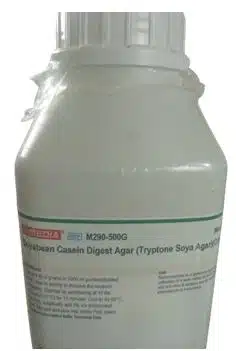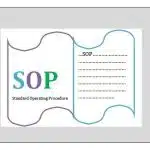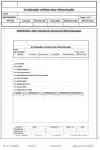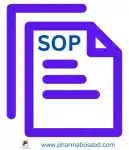Learn how to write SOP for Growth Promotion Test (GPT) of Culture Media to streamline laboratory procedures. Assure accurate and trustworthy media quality evaluation outcomes.
Table of Contents
1.0 PURPOSE
To describe the Standard Operating Procedure for Growth Promotion Test of Culture Media.
2.0 SCOPE
This SOP is applicable to Growth promotion tests carried out for culture media in the Microbiology Laboratory.
3.0 RELATED DOCUMENTS
3.1 SOP for preparation procedure of culture media.
3.2 SOP for Storage, sterilization, and disposal of Bio-hazard Waste
4.0 RESPONSIBILITIES
4.1 Executive, Microbiology is responsible for growth promotion tests.
4.2 Senior Executive/ Executive, Microbiology is responsible for supervising the growth promotion test procedure.
4.3 The head of Quality Assurance shall be responsible for the effective implementation and training of the Procedure.

5.0 ACCOUNTABILITY
Head of Department
6.0 PRECAUTIONS
6.1 Wear a protective apron, spectacles, gloves, musk, etc. during work.
6.2 Carry out the microbial analysis under a laminar Air Flow cabinet.
6.3 The Growth Promotion test is to be carried out in the microbiology testing room under Lamoner Air Flow.
The Laminar airflow unit should be cleaned immediately with 70% isopropyl alcohol after the operations are over.
Related: SOP for Maintenance of Stock Cultures in Microbiology
7.0 PROCEDURE
7.1 Preparation of culture suspension
7.1.1 Prepare a culture suspension containing 10–100 cells per ml as follows.
7.1.2 Remove the desired standard stain from the refrigerator and allow it to equilibrate to room temperature.
7.1.3 Warm the hydration fluid and dilution fluid to 34ºC to 38ºC.
7.1.4 Pick up a sterile forceps, remove two pellets and place them into the 2.0 ml vial of Hydrating fluid.
7.1.5 Immediately replace the rubber stopper, recap the vial and return the remaining lyophilized
materials to refrigerated storage.
7.1.6 To ensure complete hydration, immediately cap the vial containing the hydrated material and incubate it between 34 and 38 degrees Celsius for 30 minutes.
7.1.7 After incubation, vortex the hydrated material to ensure that the challenge strain is evenly distributed throughout the hydrated suspension.
7.1.8 Proceed to the next step immediately.
7.2 Preparation of working dilution
7.2.1 With a sterile pipette, remove 1.0 ml of the well-mixed hydrated suspension and transfer it to 9.0 ml of pH 7.2 phosphate buffer and mix well.
7.2.2 This is the working culture suspension, which contains 10 to 100 cfu/ml.
7.2.3 The hydrated microorganism suspension must be used within 30 minutes to ensure the microorganism’s viability.
7.3 Growth promotion test for media
7.3.1 Add 1.0 ml of the working solution of culture suspension containing 10–100 cells for each organism under test as specified in Table 1 to each individual plate in duplicate.
7.3.2 Cool to about 45°C and pour the sterile culture media (as per Table 1) that is to be challenged in each plate.
7.3.3 Allow the plate to stand for 20 minutes to solidify and incubate the plates as per the time and temperature specified in Table 1.
7.3.4 Pour sterile culture media (as per Table 1) on a sterile plate having no culture suspensions as negative control and incubate it in the same conditions.
7.3.5 Observe the plates for growth and note down the results in the record.
7.3.6 The media are suitable if a clearly visible growth of the microorganisms occurs.
7.4 Growth promotion test for media plates
7.4.1 Add 1.0 ml of the culture suspension containing 10–100 cells for each organism under test as specified in Table 1 into individual plates in duplicate.
7.4.2 Spread the culture suspension by using a sterile glass spreader.
7.4.3 Allow the plate to stand for 1 hour and incubate the plates as per the time and temperature specified in Table 1.
7.4.5 Label a blank media plate as a negative control and incubate it in the same conditions.
7.4.6 Observe the plates for growth and note down the results in the record.
7.4.7 The media are suitable if a clearly visible growth of the microorganisms occurs.
Table-1
| Name of media to be used | Microorganism to be used for testing | Incubation temperature | Incubation period |
| Tryptic Soya Agar | Clostridium sporogenes | 32.5 ±2.5 ° C | 3 days |
| Bacillus spizeenii | 32.5 ±2.5 ° C | 3 days | |
| Candida albicans | 22.5 ±2.5 ° C | 5 days | |
| Staphylococcus aureus | 32.5 ±2.5 ° C | 3 days | |
| Sabouraud dextrose agar | Candida albicans | 22.5 ±2.5 ° C | 5 days |
| Aspergillus niger | 22.5 ±2.5 ° C | 5 days | |
| Agar medium R2A | Bacillus spizizzeii | 32.5 ±2.5 ° C | 3 days |
| Candida albicans | 22.5 ±2.5 ° C | 5 days | |
| Staphylococcus aurous | 32.5 ±2.5 ° C | 3 days |
8.0 ABBREVIATIONS
8.1 SOP: Standard Operating Procedure
9.0 ANNEXURES
9.1 Annexure-1: Report Sheet of Growth Promotion Test of Media

Frequently Asked Questions (FAQs)
What is growth promotion test (GPT)?
Microbiological testing in support of pharmaceutical quality includes testing for growth stimulation in culture media. The growth promotion test is a requirement for quality control that verifies if a fresh batch of media can sustain the growth of a certain group of representative microorganisms.
Why GPT(growth promotion test) is done?
Before applying the medium for analysis, the test verifies its reliability and functioning. GPT should not be used for dilution solutions or rinse fluids, only for solid media and broths. By inoculating the product with at least 100 CFU of microorganisms as specified by the pharmacopoeia, GPT is carried out.

Abdus Sobhan Salim is professional experienced pharmacist in pharmaceuticals, author and founder of pharmabossbd.com, the first Bangladeshi pharmaceutical blogger since 2019.



